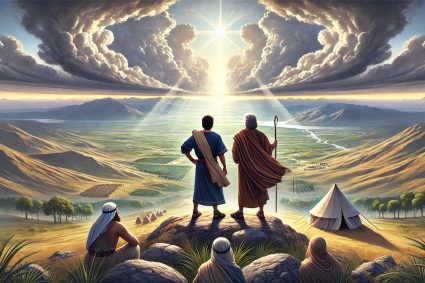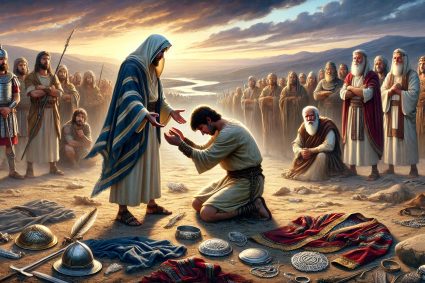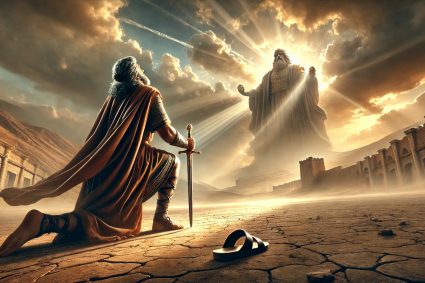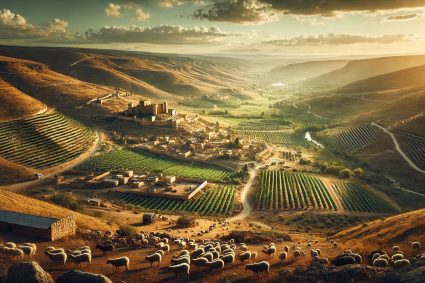
Series THE BOOK OF MARK with Pastor Mark Finley |
Lesson 13.The Risen Lord |
The Resurrection of Christ: Foundation of Christian Faith and Hope |
Lesson 13 deals with the decisive event in Christian history: the resurrection of Jesus Christ. The Gospels report how women discovered the empty tomb and were the first to receive the message of the resurrection. Despite initial doubt and disbelief among the disciples, Jesus appeared several times after his resurrection. These encounters strengthened their faith and led them to boldly spread the Gospel to the entire world. The resurrection is the foundation of the Christian hope for new life and the central event that shapes the faith of the disciples and Christians to this day.
Memory Text: Mark 16:6 – “But he said to them, ‘Do not be alarmed. You seek Jesus of Nazareth, who was crucified. He is risen! He is not here. See the place where they laid Him.’ ”
Content:
13.1 Rejoicing in the Resurrection
Hope and New Life in Christ
The resurrection of Jesus is the central point of the Christian faith and symbolizes the victory over death. In Mark 15:42–16:6, it becomes clear that Jesus was quickly buried after his death because the Sabbath began. However, on Sunday morning, the women discover the empty tomb and learn of the resurrection. This is significant as it confirms the fulfillment of Jesus’ promises and the beginning of new life for believers. Although the New Testament does not teach a specific sanctification of Sunday but views baptism as a symbol of the resurrection, the joy over Jesus’ victory over death is universal. This resurrection gives us hope for our own new life in Christ, as Peter describes in 1 Peter 1:3.
13.2 The Stone Was Rolled Away
Testimonies and Evidence of the Resurrection
The resurrection of Jesus is central both in the Gospel of Mark and in the First Letter to the Corinthians. Both texts emphasize the essential elements: Jesus died, was buried, rose again, and was seen by many witnesses. Particularly notable is that Mark 16:7 announces the disciples’ encounter with the resurrected Jesus in Galilee. These accounts underscore that the resurrection is not only a matter of faith but is supported by many witnesses. Even skeptical historians acknowledge the empty tomb, which makes the resurrection more credible. The transformed lives of the disciples and their bold testimony are strong indications of the truth of the resurrection.
13.3 The Women at the Tomb
From Silence to Proclamation
The women who arrived at Jesus’ tomb were deeply grieved and expected to anoint Jesus’ dead body. The possibility that Jesus had risen was not on their minds. However, when they learned the message of the resurrection, they first reacted with fear and amazement and remained silent about it. This reaction reflects the recurring theme in the Gospel of Mark, where Jesus often commands the concealment of his true identity. However, this silence does not last long. At the end of the Gospel, the disciples spread the message of Jesus’ resurrection everywhere, symbolizing the overcoming of silence and the proclamation of the good news.
13.4 Appearing to Mary and Others
First Witnesses of the Resurrection: The Unexpected Role of Women
Mark 16:9–20 adds crucial details to the resurrection account that support the testimonies of the first witnesses and the later proclamation. It is emphasized that Mary Magdalene was the first to see the resurrected Jesus—a significant fact since women did not hold high status as witnesses in that society. If the story had been fabricated, men would likely have been named as the first witnesses. However, the disciples initially did not believe her, showing their human weakness and doubt. Jesus had to later rebuke them for their unbelief. Their subsequent bold proclamation of the risen Christ, however, stands as strong evidence for the truth of their experience.
13.5 Go into All the World
The Mission to Proclaim: Jesus’ Message to All Nations
In Mark 16:14–20, Jesus first rebukes his disciples for their unbelief and hardness of heart before giving them the command to carry the Gospel to the entire world. This command remains relevant today: Christians are called to proclaim the message of salvation to all people. Jesus promises that signs and wonders will accompany their work, not as spectacles but as protection and confirmation of their mission. His ascension into heaven and the assurance that he works with his disciples give us today the certainty that he is present in our proclamation and work.
13.6 Summary
The Resurrection of Jesus: Hope and Proclamation by the Disciples
The resurrection of Jesus is the central belief of Christianity and is thoroughly testified in the Gospels and other New Testament texts. Women, the first witnesses of the empty tomb, played an unexpected and significant role in proclaiming the resurrection. Despite initial unbelief and doubt among the disciples, Jesus confirmed his resurrection through several appearances. These encounters strengthened the disciples’ faith and led to the proclamation of the Gospel throughout the world. The resurrection gives believers hope and the assurance of eternal life.
(Visited 19 times, 1 visits today)




















